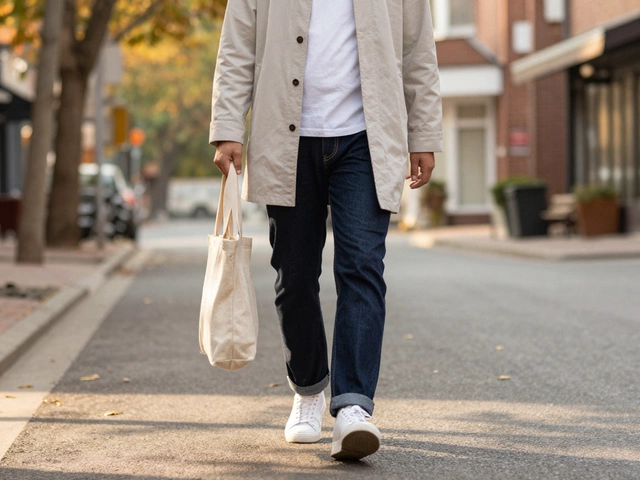Who Falls in Love First? Calculator
Estimated Timeline for Falling in Love
Ever wondered who tends to fall in love first when a new romance sparks? It’s not just a myth - science, culture, and personality all play a part. Below you’ll get a clear picture of the key factors, backed by research, and practical tips to navigate those early‑heartbeats.
Key Takeaways
- On average, women report feeling romantic affection 2-5 days earlier than men.
- Secure attachment styles often delay the "first love" rush, while anxious styles accelerate it.
- Oxytocin spikes are linked to rapid bonding, especially in younger adults.
- People who prioritize "Quality Time" in love languages tend to recognize love earlier.
- Understanding these patterns helps keep the relationship balanced from the start.
When we talk about falling in love first, we mean the moment a person emotionally commits - the shift from liking someone to feeling a deep, romantic attachment.
Romantic love is a intense, mutual emotional bond that involves both physiological changes and cognitive appraisal of a partner as a desirable companion.Defining the Early‑Love Moment
Researchers usually measure the "first love" moment with self‑reported surveys, asking participants how many days after meeting they felt "in love". The metric is subjective, but large‑scale studies (e.g., the 2022 Tinder Global Study) have found consistent patterns across cultures.
Evolutionary Lens: Why One Gender Might Lead
From an evolutionary standpoint, women historically benefited from early emotional commitment because it signaled a partner’s willingness to invest in offspring. Men, on the other hand, faced selection pressures to assess long‑term compatibility before committing fully. This translates today into a slight timing edge for women.
Men typically exhibit a slower onset of romantic feelings, averaging 7-10 days after a first meeting. Women often report the first love feeling within 4-6 days, reflecting a quicker emotional response.
Neurochemical Triggers Behind the Rush
Two brain chemicals dominate the early‑love phase: dopamine, which fuels reward and excitement, and oxytocin, the "cuddle hormone" that deepens trust.
Oxytocin is released during physical closeness and can accelerate the feeling of bonding, especially in younger adults (ages 18‑25).Studies from the University of Cambridge (2021) showed that participants with higher baseline oxytocin levels reported falling in love up to 30% faster than those with lower levels.
Attachment Styles: The Psychological Blueprint
Attachment theory, originally conceived by Bowlby, outlines three main adult styles that shape love timing.
- Secure - tends to wait for clear mutual interest before declaring love.
- Anxious - often feels love quickly, seeking reassurance.
- Avoidant - delays love feelings, focusing on independence.
Age and Cultural Factors
Age matters. Young adults (18‑30) experience the earliest love onset because both hormones and social environments encourage rapid connections. Older adults (40+) usually report a more measured pace, often due to past relationship experience.
Cultural norms also shift the timeline. In Mediterranean cultures, expressive affection is common, leading to earlier love declarations. In contrast, Nordic cultures value emotional restraint, resulting in a slower build‑up.
Love Languages and Early Recognition
Dr. Gary Chapman’s love‑language framework offers a practical lens. Individuals who prioritize "Quality Time" or "Physical Touch" notice the intimacy cues sooner, which can translate into an earlier love feeling.
Love languages shape how people perceive relational signals; those favoring physical touch often report faster love onset.
Comparing Men and Women: A Quick Reference
| Gender | Average Onset (Days) | Key Hormone Influence | Typical Behavior |
|---|---|---|---|
| Women | 4-6 | Oxytocin surge during early intimacy | Express affection quickly, seeks emotional validation |
| Men | 7-10 | Dopamine linked to reward anticipation | Observes long‑term compatibility, slower verbal commitment |
Practical Tips for Navigating the Early Phase
- Observe signals, not just words. Physical touch, eye contact, and shared laughter often precede verbal confession.
- Talk about attachment style early. Knowing if your partner is anxious or secure helps set realistic expectations.
- Mind the hormone boost. Activities that increase oxytocin - like a short walk hand‑in‑hand - can speed up bonding, but keep the pace comfortable for both.
- Discuss love languages. If one partner values "Acts of Service," a small gesture can cue the love feeling earlier.
- Avoid rushing decisions based solely on early chemistry. Give at least two weeks before defining the relationship officially.
Frequently Asked Questions
Do men ever fall in love before women?
Yes, especially when the man has an anxious attachment style or when cultural expectations encourage early emotional expression. In such cases, the onset gap can disappear.
How reliable are self‑report surveys on love timing?
They’re useful for spotting trends but can be biased by memory, social desirability, and individual definitions of "in love." Combining surveys with physiological measures (like hormone levels) gives a fuller picture.
Can oxytocin supplements make me fall in love faster?
Research is still tentative. While nasal oxytocin can increase trust in lab settings, real‑world romantic outcomes are mixed and may carry ethical concerns.
Is there a safe age range to expect an early love feeling?
Young adults (18‑30) typically experience the quickest onset due to higher hormone levels and more social experimentation. Later ages can still feel love quickly, especially after major life changes.
How can I balance if I fall in love faster than my partner?
Communicate openly about pacing, focus on shared activities that nurture both oxytocin and dopamine, and respect each other’s comfort zones. Setting clear milestones can keep both partners aligned.
Next Steps
Take a moment to reflect on your own attachment style and love language. If you notice a pattern of falling in love too quickly, try pausing before saying "I love you" and let the relationship develop organically. For partners who feel slower, share your emotional timeline early to avoid misunderstandings.
Understanding who usually falls in love first isn’t about pinning blame; it’s about recognizing the biology and psychology that shape our hearts, so you can build a healthier, more synchronized connection.






